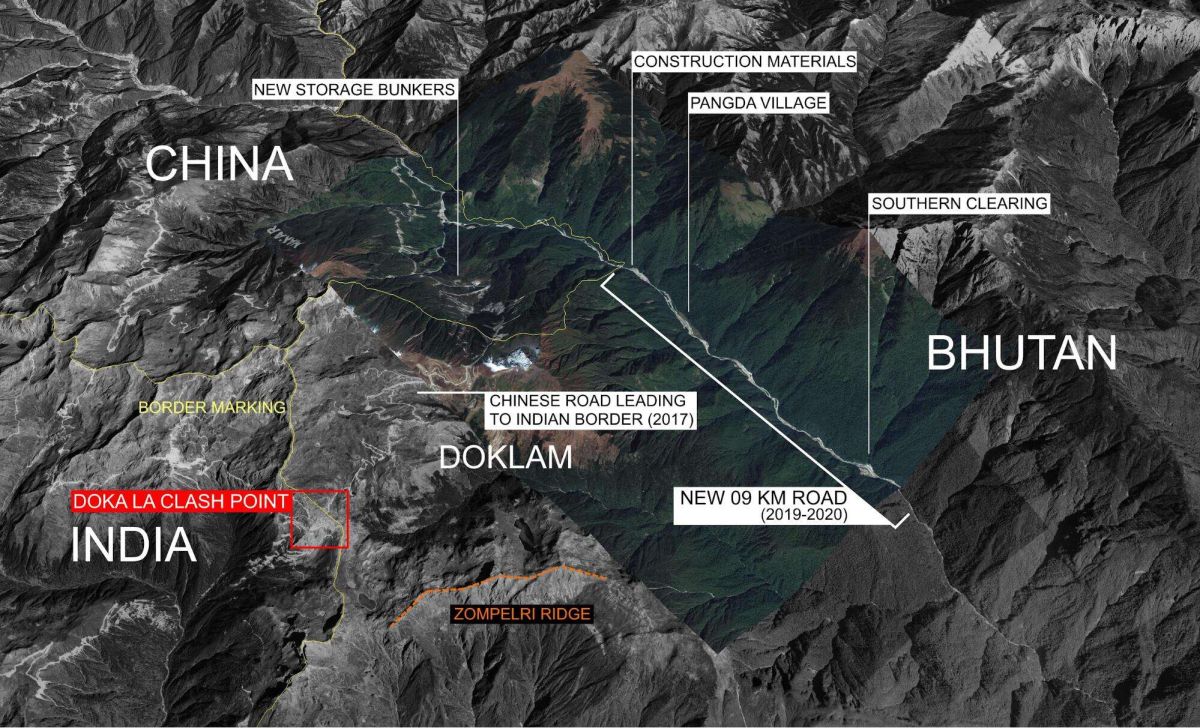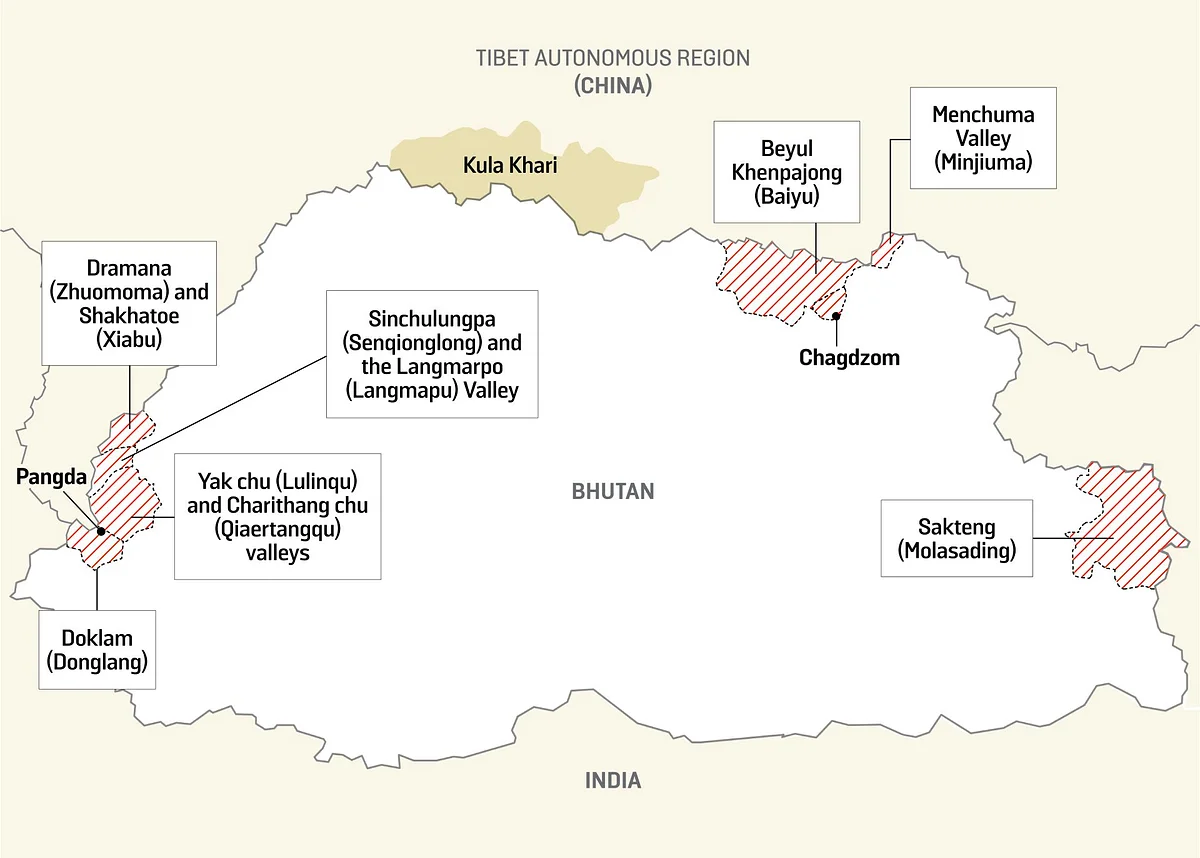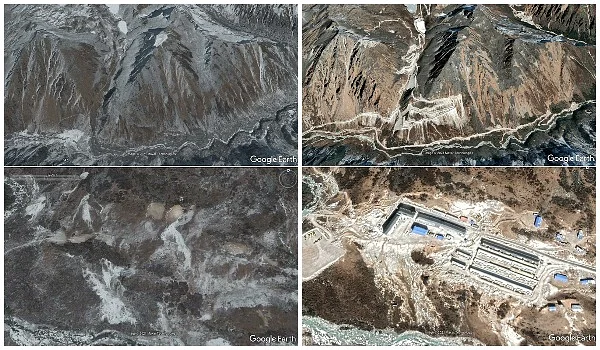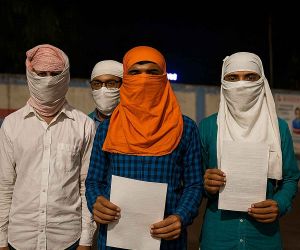MORE COVERAGE
Twitter Coverage
Satyaagrah
Written on
Satyaagrah
Written on
Satyaagrah
Written on
Satyaagrah
Written on
Satyaagrah
Written on
JOIN SATYAAGRAH SOCIAL MEDIA
Explained: China’s Village Construction In Bhutan’s Territory And What It Wants To Achieve With This Creeping Invasion

The construction of hundreds of border villages by China in the Himalayas is not limited to its frontier with India and the Indian territory under its occupation. Bhutan, too, is at the receiving end of China’s creeping invasion.
China claims large parts of Bhutan’s territory, dispersed all along the border. It lays claim to two areas in the north — Beyul Khenpajong and Menchuma Valley.
In the east, Beijing has laid claims to Sakteng, which it can access only through the Indian state of Arunachal, claimed by it as ‘South Tibet’. Sakteng is not contiguous with Tibet or any other Bhutanese territory claimed by China.
 |
In the west, near India’s Sikkim and the Siliguri Corridor, China claims four contiguous areas belonging to Bhutan as its own, one of which is Doklam (other three being Charithang, Sinchulungpa and Dramana). It was China’s attempt to build a road across the Doklam plateau that triggered the 73-day long stand off between the Indian Army and the People’s Liberation Army (PLA) in 2017.
 |
Over the years, China has been occupying Bhutanese territory by building roads and military outposts in the areas that it lays claim to.
In 2015, China announced that it had established a village called Gyalaphug in Beyul Khenpajong, an area in north Bhutan that Beijing claims.
The construction of border villages has intensified since 2017, when China launched its “xiaokang [well off] villages” programme. These villages, a large number of which have already been built, are coming up all along the Tibetan frontier, including Indian and Bhutanese territory that China claims as its own.
Recent satellite imagery shows China is building at least three such villages, including Gyalaphug, in Bhutanese territory, and plans to construct yet another settlement in the kingdom’s territory is afloat. Infrastructure to support these villages and sustain the PLA’s presence in Bhutan’s territory is also coming up.
 |
China formally opened Gyalaphug village in 2018, allowing new residents to settle. By 2021, the village has been significantly expanded, including the construction of four more blocks, each containing five identical homes.
By one account, China has built around “66 miles (106 kilometers) of new roads, a small hydropower station, two Communist Party administrative centers, a disaster relief warehouse, a communications base, five military or police outposts, and what are believed to be a major signals tower, a satellite receiving station, a military base, and up to six security sites and outposts” just in the territory it claims in north Bhutan.
 |
In the territory China lays claim to in west Bhutan, it has built a village named Pangda. Roads and other infrastructure has also come up to support the village, which is not far from Doklam. The village, located around 2.5 km inside Bhutanese territory from the border with China, is one of the 628 xiaokang villages, as is Gyalaphug.
These villages will serve as permeant watch posts for the PLA. The inhabitants of these villages, whom the Chinese Communist Party (CCP) calls the “defenders of sacred land and constructors of happy homes”, will be additional eyes and ears for the PLA in areas where China's claims overlap with those of Bhutan and India.
The CCP has made no secret of the construction of villages along the Himalayan frontier or the aim it wants to achieve with it. In 2018, Zhuang Yan, deputy secretary of the Party Committee of Tibet, said that the border villages were being developed to ensure "consolidation of border areas and border security".
“This is to implement … the central policies of improving support to border residents, stabilising and consolidating the border,” the Chinese plan says.
To attract its loyalists and cadre, the CCP is investing in the construction of infrastructure such as road network and power grid. Around 30.1 billion yuan or nearly $4.6 billion were earmarked in 2017 for the construction of new homes and infrastructure for transport, energy, water and communication and facilities for education, health and culture under the programme.
The project has received consistent attention from the CCP's top echelons
In 2018, Che Dalha, the chairman of the Tibet Autonomous Region, visited the Yumai village, home to sisters who wrote to Xi Jinping, to take stock of the construction of the border village. In August 2020, only a few weeks after the clashes between the Indian Army and the PLA in eastern Ladakh’s Galwan Valley, China’s Foreign Minister Wang Yi made a visit to border areas in Tibet to inspect “infrastructure building and the construction of villages”.
A new Chinese village that has come up in Arunachal’s Upper Subansiri has been built under this programme. While the area where the village has come up is part of Arunachal Pradesh, it has been under Chinese control since 1959. Construction of the village will improve Beijing’s control over the remote area.
But in Bhutan, China’s plan is goes beyond land grab
In negotiations over the boundary issue which began in 1984, Beijing has offered to give up on its claims on 495 square km of territory in the north if Thimphu relents on 269 square km of its territory in the west, including Doklam. Bhutan, sensitive to India’s security concerns linked to Doklam, has rejected this offer.
China’s interest in Doklam comes from the plateau’s proximity to the Siliguri Corridor, a 22-km wide passage that connects India’s northeast with the rest of the country. The corridor — known also as the 'Chicken’s Neck' — is seen as a strategic vulnerability, a choke point that China could exploit in the event of war.
In 2017, China started building a road on the Doklam plateau headed towards the Jampheri ridge. From this ridge starts the descent into the foothills of southwestern Bhutan that lead into the Siliguri Corridor. Access to the ridge will bring China closer to the corridor, making it vulnerable, and this was why the India sent troops into Bhutanese territory to stop the construction of the road.
But given Bhutan’s refusal to trade Doklam for settlement on territory in the north, China has adopted a strategy of needling Thimphu with transgressions and occupation of its territory to arm-twist it into accepting the offer.
A part of China’s strategy is to create an impression in Bhutan that it is unable to protect its interests by striking a deal with Beijing because of India’s security concerns linked to Doklam. It has been trying to create a situation where India is seen as the hidden hand behind Bhutan’s refusal to trade its claim on Doklam for concessions in other areas to inflame public sentiments in Bhutan against Delhi. This, China believes, will force Bhutan to consider its offer to trade Doklam for a settlement in other areas and create diplomatic space for it in Thimphu.
 Support Us
Support Us
Satyagraha was born from the heart of our land, with an undying aim to unveil the true essence of Bharat. It seeks to illuminate the hidden tales of our valiant freedom fighters and the rich chronicles that haven't yet sung their complete melody in the mainstream.
While platforms like NDTV and 'The Wire' effortlessly garner funds under the banner of safeguarding democracy, we at Satyagraha walk a different path. Our strength and resonance come from you. In this journey to weave a stronger Bharat, every little contribution amplifies our voice. Let's come together, contribute as you can, and champion the true spirit of our nation.
 |  |  |
| ICICI Bank of Satyaagrah | Razorpay Bank of Satyaagrah | PayPal Bank of Satyaagrah - For International Payments |
If all above doesn't work, then try the LINK below:
Please share the article on other platforms
DISCLAIMER: The author is solely responsible for the views expressed in this article. The author carries the responsibility for citing and/or licensing of images utilized within the text. The website also frequently uses non-commercial images for representational purposes only in line with the article. We are not responsible for the authenticity of such images. If some images have a copyright issue, we request the person/entity to contact us at This email address is being protected from spambots. You need JavaScript enabled to view it. and we will take the necessary actions to resolve the issue.
Related Articles
- Government of India gives Twitter "one last notice" as "gesture of goodwill" to comply with IT Rules, 2021
- Giant hypocrite: Activist confronts Twitter CEO over censorship, asks why he ‘hates Jews and Conservatives’
- Twitter says it removed verified badge from Vice President Venkaiah Naidu’s account due to ‘inactivity’: Here is why their argument is flawed
- Just after the verification badge of VP of India was restored, Twitter removes verification of RSS Chief Mohan Bhagwat, bureaucrat
- खिलाड़ियों का धार्मिक आधार पर खालिस्तानी आतंकियों को महिमामंडित करना: खतरा कितना बड़ा है?
- Srinagar: Top LeT commander, 1 Pakistani terrorist killed in encounter, AK-47s recovered
- If Modi’s ‘Vaccine Diplomacy’ wrong, Sonia Gandhi’s ‘Eurozone Bailout’ wrong
- ‘India Out’ Campaign which was once-receding is Gaining Traction in Maldives & It Has a Lakshadweep Link
- India successfully carried out the test firing of a new missile of the Agni series known as Agni-Prime
- Twitter rewards an Islamist org, set to be banned by India, with a verified blue tick: Here is what PFI has done in the past
- ‘Don’t use IMA to propagate any religion’: Read what the Delhi court said slamming IMA President John Rose Jayalal
- Communist rockstar KK Shailaja displays ugly Hinduphobia in Kerala assembly
- The ‘Sanghi propaganda’ trope on abduction and conversion of Sikh girls to Islam. Here is how this online tirade is an omen of impending danger
- Dear NSUI, Bhagat Singh And Subhas Chandra Bose Admired Savarkar And His Ideas
- An Artisan Heritage Crafts Village: Indigenous Sustainability of Raghurajpur

























